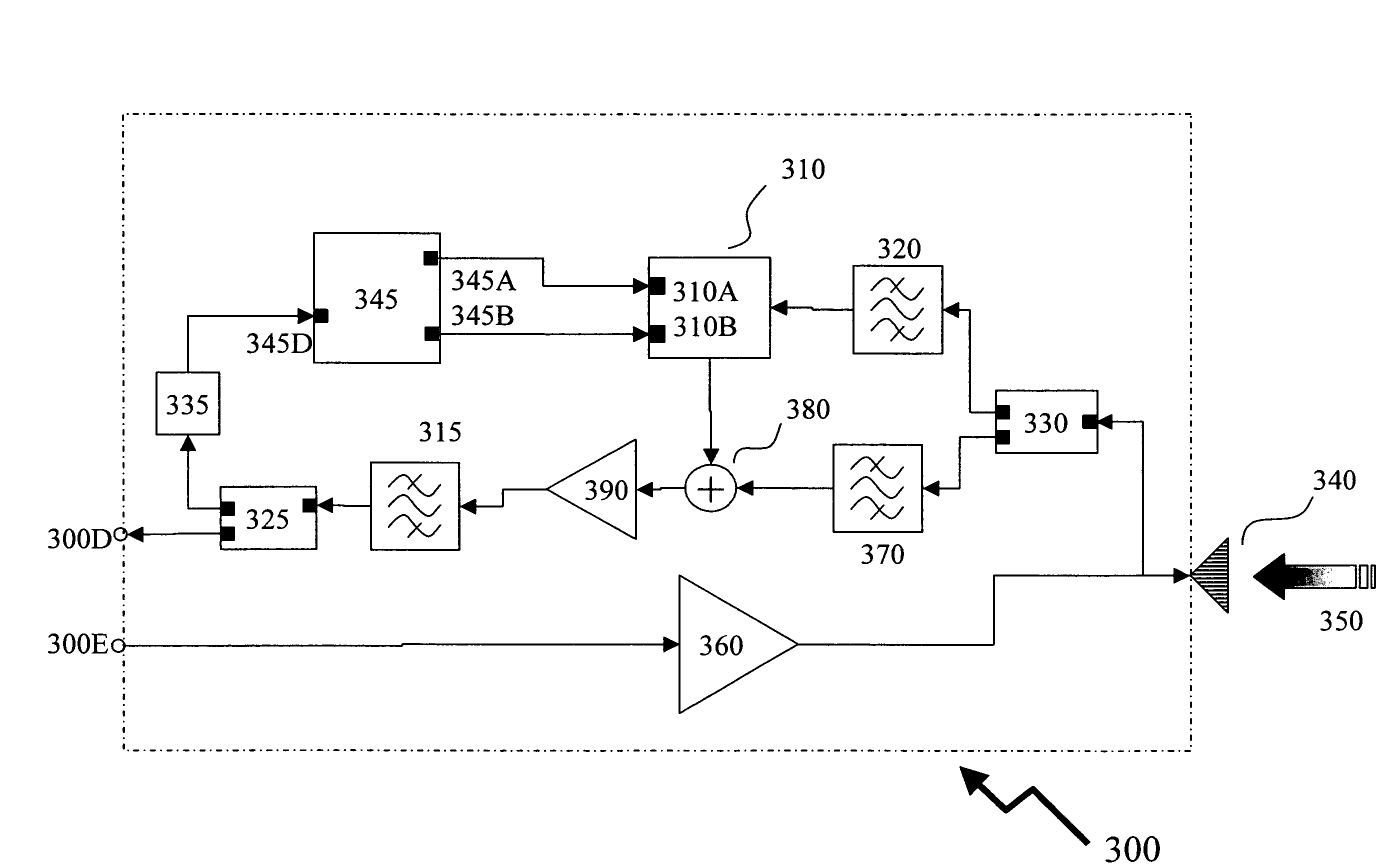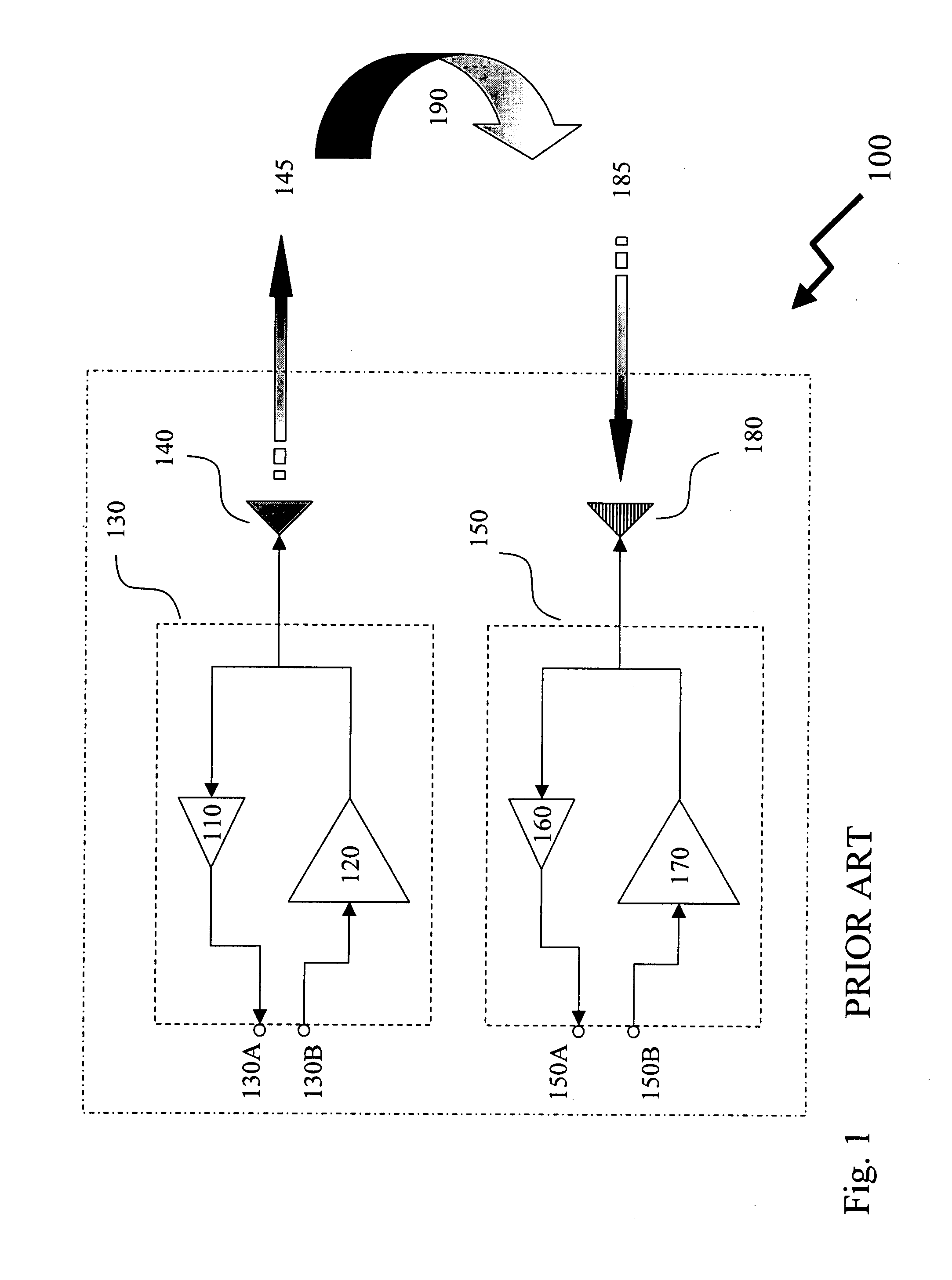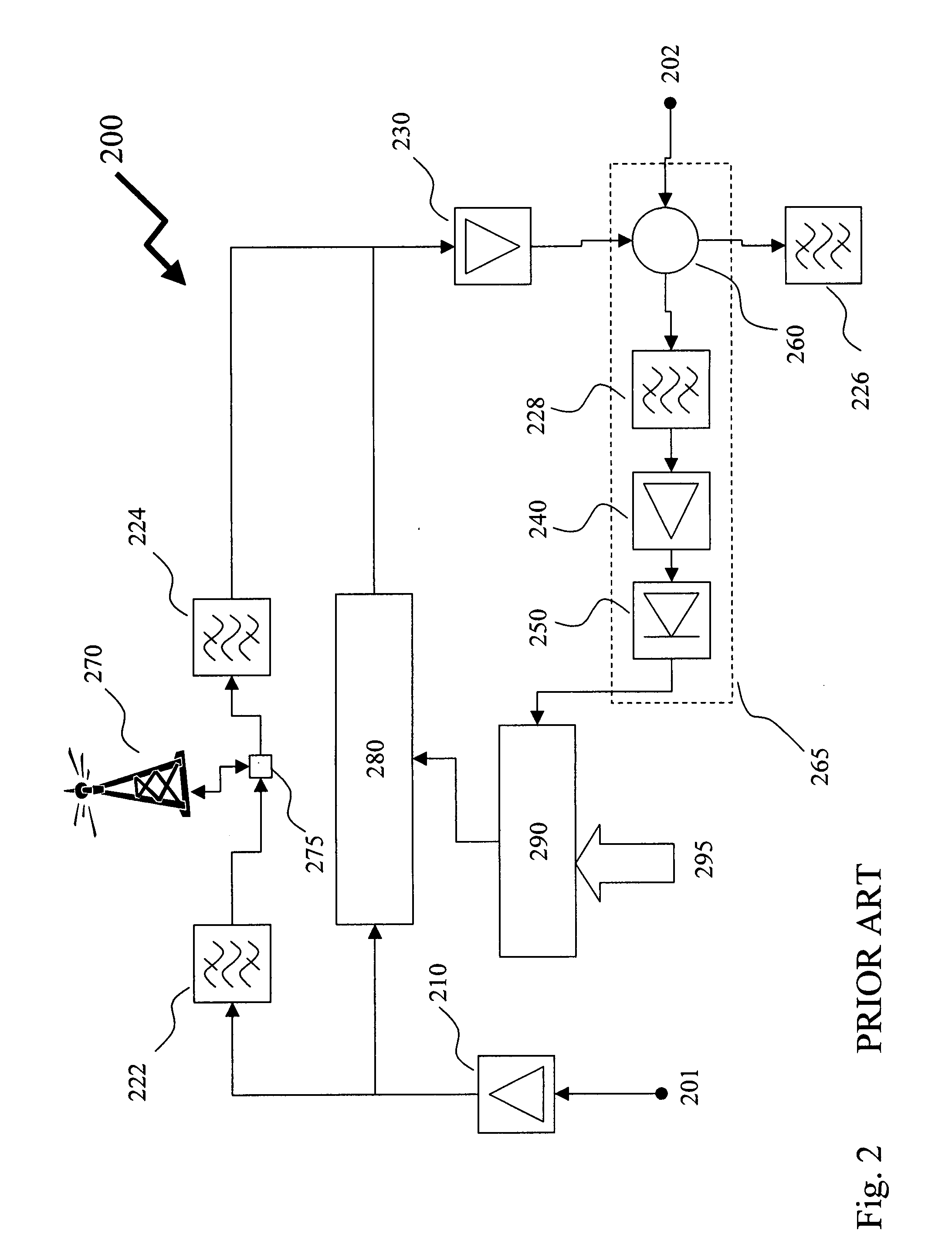Feed-forward cancellation in wireless receivers
a wireless receiver and feedforward technology, applied in the direction of line-fault/interference reduction, transmission, super-regenerative demodulator circuits, etc., can solve the problems of reducing aggregate throughput in both systems, wasting spectrum in one or both systems, and reducing aggregate throughpu
- Summary
- Abstract
- Description
- Claims
- Application Information
AI Technical Summary
Benefits of technology
Problems solved by technology
Method used
Image
Examples
Embodiment Construction
[0055]FIG. 1 illustrates an exemplary scenario for transmitter interference from a WiFi transceiver 130 to a WiMAX transceiver 150, both transceivers being located within a single device 100.
[0056]As shown the WiFi transceiver 130 comprises a WiFi antenna 140, for receiving and transmitting data over the WiFi carrier 145 according to an IEEE 802.11b or an IEEE 802.11g standard operating in the range 2400-2485 MHz. Shown for the WiFi transceiver 130 are transmit signal input port 130B, which receives the data for transmission encoded onto the appropriate channel within the WiFi frequency range, and is coupled to the WiFi power amplifier 120 for boosting and feeding forward to the WiFi antenna 140. The WiFi antenna 140 is also coupled to a WiFi receiver amplifier 110, which receives WiFi signals from the WiFi antenna 140, boosts them with low noise and high gain due to the low received power and couples this signal to the WiFi receiver port 130A.
[0057]Also the WiMAX transceiver 150 is...
PUM
 Login to View More
Login to View More Abstract
Description
Claims
Application Information
 Login to View More
Login to View More - R&D
- Intellectual Property
- Life Sciences
- Materials
- Tech Scout
- Unparalleled Data Quality
- Higher Quality Content
- 60% Fewer Hallucinations
Browse by: Latest US Patents, China's latest patents, Technical Efficacy Thesaurus, Application Domain, Technology Topic, Popular Technical Reports.
© 2025 PatSnap. All rights reserved.Legal|Privacy policy|Modern Slavery Act Transparency Statement|Sitemap|About US| Contact US: help@patsnap.com



